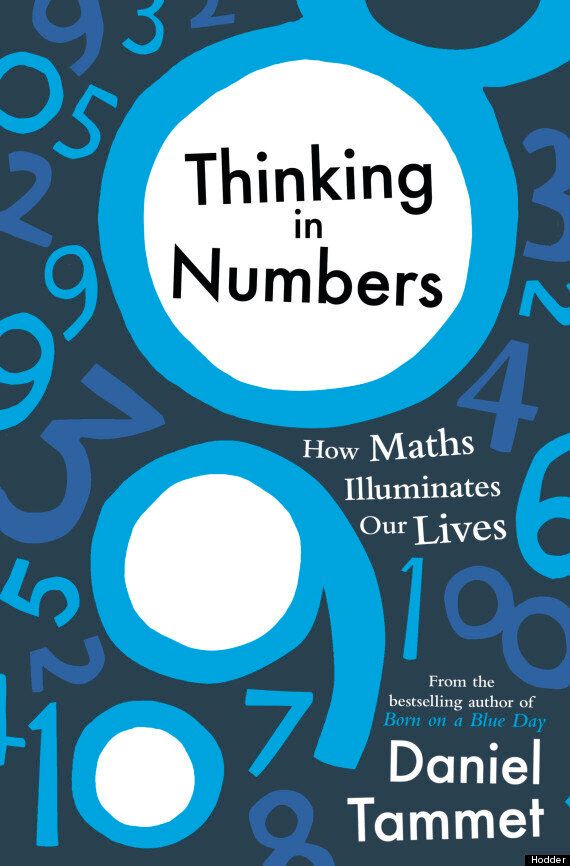Imagine if, when looking at a piece of art, you saw a numerical code. Or a rainbow when reading a book. For Daniel Tammet, life has always been more than black and white - and he’s using his unique outlook to convince the world that maths can be as extensive as a library, and as beautiful as the work of the Old Masters.
Author and mathematician Tammet was born with autistic savant syndrome, a developmental condition which affects around one person in 300. The connections in his brain have evolved differently, which has always allowed him to see the world differently from the norm. In particular, he understands numbers and words as visual entities.
In person, Tammet is quietly spoken, with a hint of an airport accent; probably due to the fact he now spends his time speaking French, as a citizen of Paris. For a person who grew up without the confidence to connect with people, he is fascinating in conversation - logically explaining his condition and experiences, but with a vividness that is envy-inducing.
This summer saw the release of the 33-year-old's third book, a collection of 25 essays called Thinking In Numbers, a naturally neat six years after his debut, Born On A Blue Day, shot to the top of best sellers' lists in America.

Tammet's condition allows him to see numbers and words as colours and shapes
Born into an East London working class family, as the eldest of nine children, Tammet’s undiagnosed condition caused his childhood to be one of misunderstanding and isolation - something which caused his love affair with numbers to blossom.
He says, “When I was a kid there wasn’t a name for my condition, but what I found difficult was making friends and knowing how to fit in, and I struggled with loneliness. So I found numbers as a way of refuge, and a way of finding something that I was good at and that I loved. I would play with numbers in a way that other kids would play with their friends.”
In Tammet’s mind, numbers developed personalities and appearances, as “personal and unique as a fingerprint”.
He tells me, “37 is a lumpy number, a bit like porridge. Six is very small and dark and cold, and whenever I was little trying to understand what sadness is I would imagine myself inside a number six and having that experience of cold and darkness. Similarly, number four is a shy number. I was very shy growing up, so I would tell people that I was like a number four.”
Tammet got to know numbers “like old friends”, but it was when he discovered literature that his relationship with numbers developed and he learned to cope with his condition.
“Reading and discovering fiction has taught me how to empathise, understand falling in love and all those complex relationships that people have to deal with.”
“I realised that mathematics is a universal subject as much as literature and the two have bridges and encouraging people not to make this artificial barrier between the two.”
It’s this “artificial barrier” that Tammet wants to break down. In Tammet’s mind, literature, art and maths are united. For him, maths’ real-life applications are not merely tax returns and restaurant bills, but the storytelling of an infinite subject and the reasoning behind our daily existence.
“The fact is that patterns like those we find in times tables underpin all our lives. Like time - why does time seem to speed up as we get older? Or probability of life in other planets, or mortality tables, how much time we have left. All of these are mathematical questions.”
Even love, the eternal muse of artists and writers, can be understood mathematically, argues Tammet: “When we anticipate someone, when we try to understand them, we model their behaviour. We try to second-guess what they are going to say and do, and we fail, of course, because everyone is beyond statistics - there’s only so much we can predict, it’s what makes life interesting and frustrating at the same time.”

Thinking In Numbers is Tammet's third book looks at the impact of mathematics on everyday life
This link between literature and maths permeates Thinking In Numbers. Poems and proverbs are analysed mathematically, Shakespeare’s fascination with zero is dissected. Tammet sees the book as a way of “making mathematics as accessible as possible by telling a mathematics that is full of stories - where does zero come from?”
Like Nabokov, Tammet sees his written words in colours. Able to speak 10 languages, he understands the process as just another form of translation. “I guess as a writer I’m translating from one world to another, thoughts and feelings and ideas into numbers and words.”
Like words, numbers and their meanings, Tammet claims, will eternally fascinate. As a man of statistics, I trust him when he says we’ll eventually run out of new things to learn about science.
“But in terms of mathematics” he continues, “that will never happen. We will always have more to discover, more to invent, more to understand and that’s much closer to art and literature than any science.
He’s strongly opinionated that for generations, people have been taught to understand maths wrongly. It’s here too that the connection between words and numbers makes sense: “Nobody’s going to say to you, Scrooge in a Christmas Carol looks like this, unless you watch a film. The whole thing with books is that you come up with your own pictures. Maths should be the same thing.”
“You should come up with your own way: it’s about freedom and it’s about finding your own response to life, its a universal subject like literature, there are so many ways of thinking about it.”
An afternoon with Tammet shows maths not as the squiggles on a gas bill, or the temperature of a British summer, but something that can help explore the issues that have been motivating humankind to create art and literature for centuries. While we won’t ever see numbers in the same way he does, we might learn to imagine their infinite influence. Because what good would the alphabet be if nobody used it to write with?